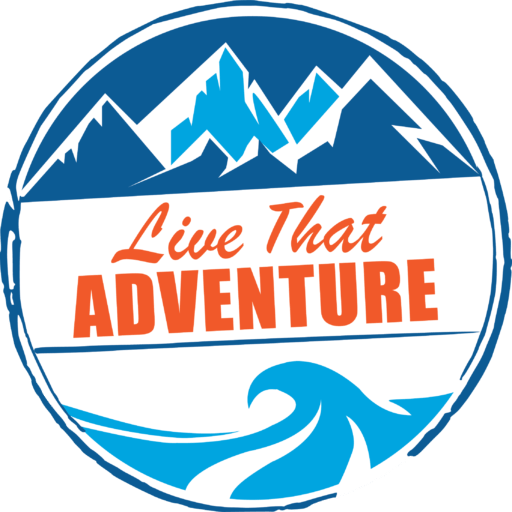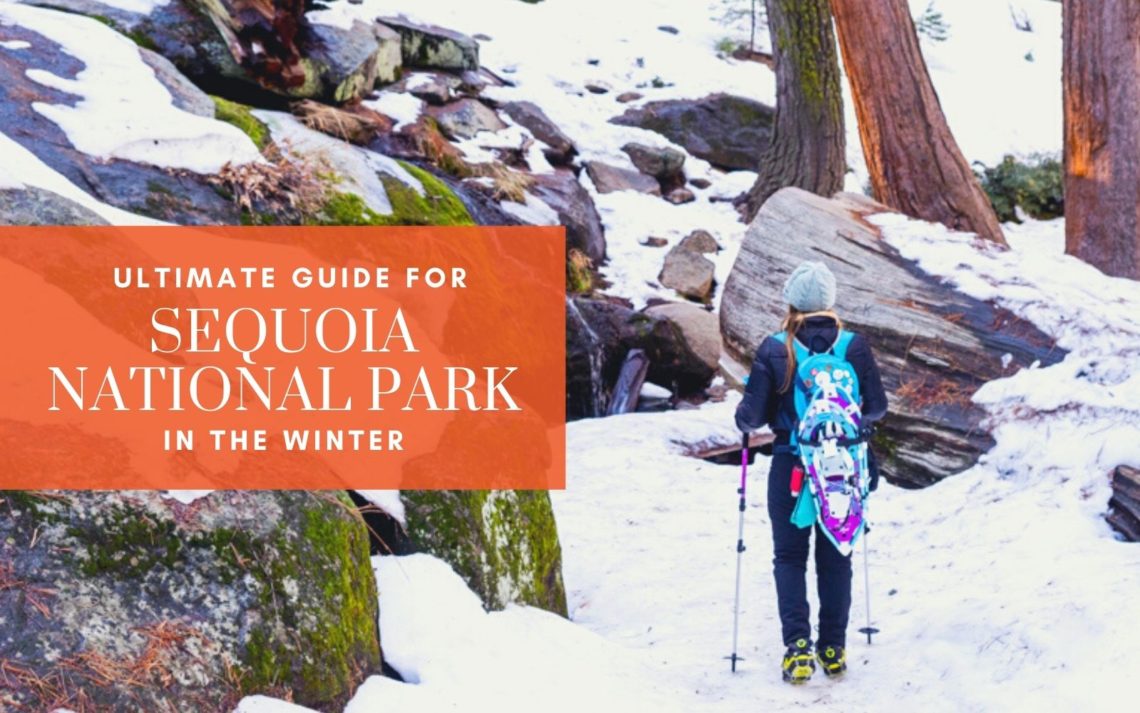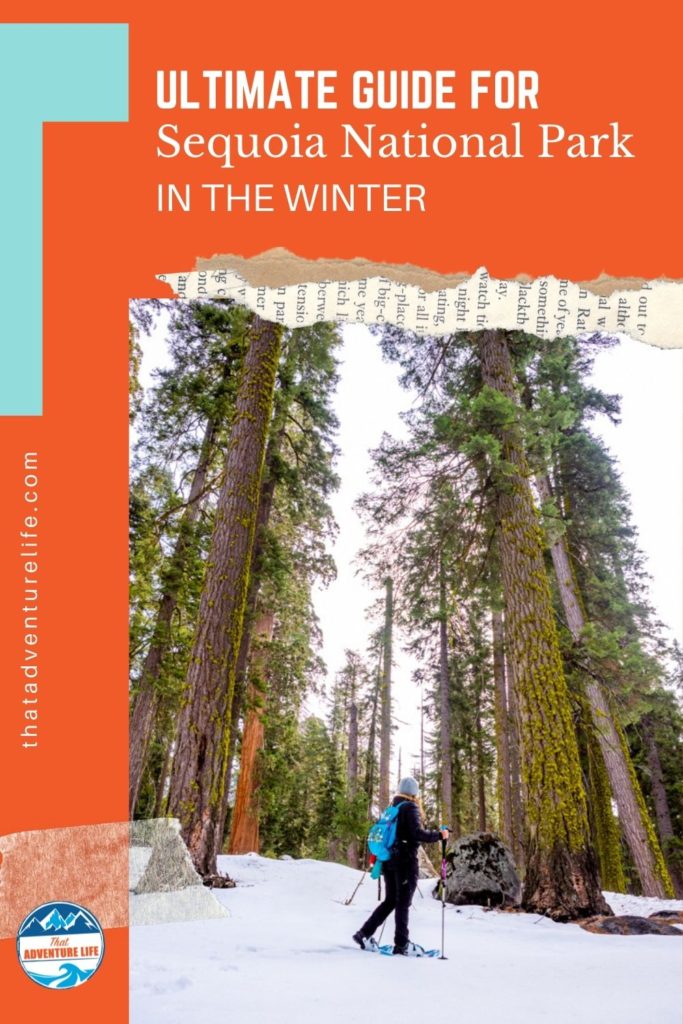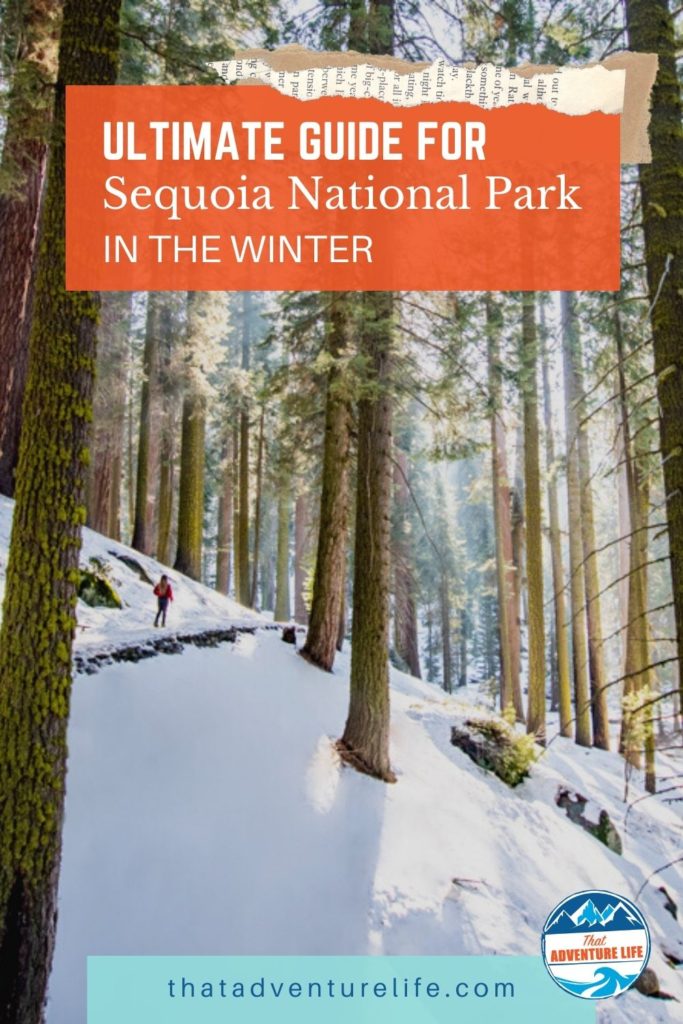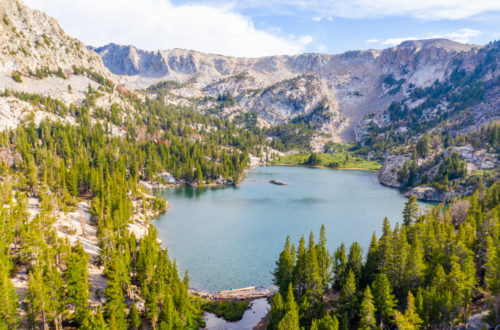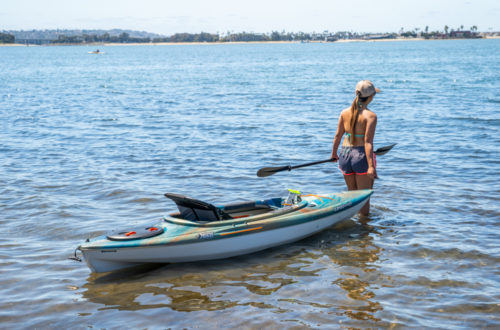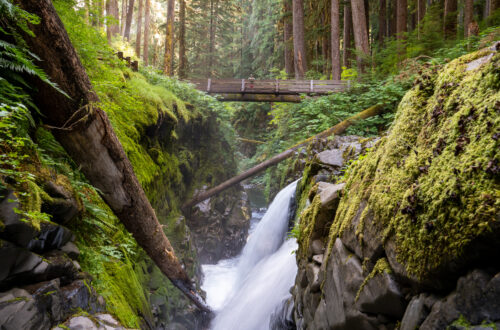Sequoia National Park is beautiful regardless of the seasons but there is something magical about giant trees covered in blankets of snow. It is breathtaking. Winter is actually our favorite season to visit this beautiful place. There are fewer crowds so you’ll have most of the place to yourself. However, winter and snow mean road closures, dangerous driving conditions, and longer hikes. It also means you’ll need a bit more preparation. So here is our guide to visiting Sequoia National Park in the winter. Hopefully, it will help you make the best of your time there.
Driving Here
Direction:
There is only one road that goes through Sequoia National Park. It is Generals Highway 198. This road connects Sequoia National Park and Kings Canyon, however, it usually closes during the winter. If you want to visit Kings Canyon on the same trip, you’ll need to go around. The best way to get to Sequoia National Park is by taking Highway 198 through Three Rivers City.
Generals Highway is long and winding so make sure to take your time driving through it. In the winter, the roads can be slippery and dangerous as they are often covered in snow and ice.
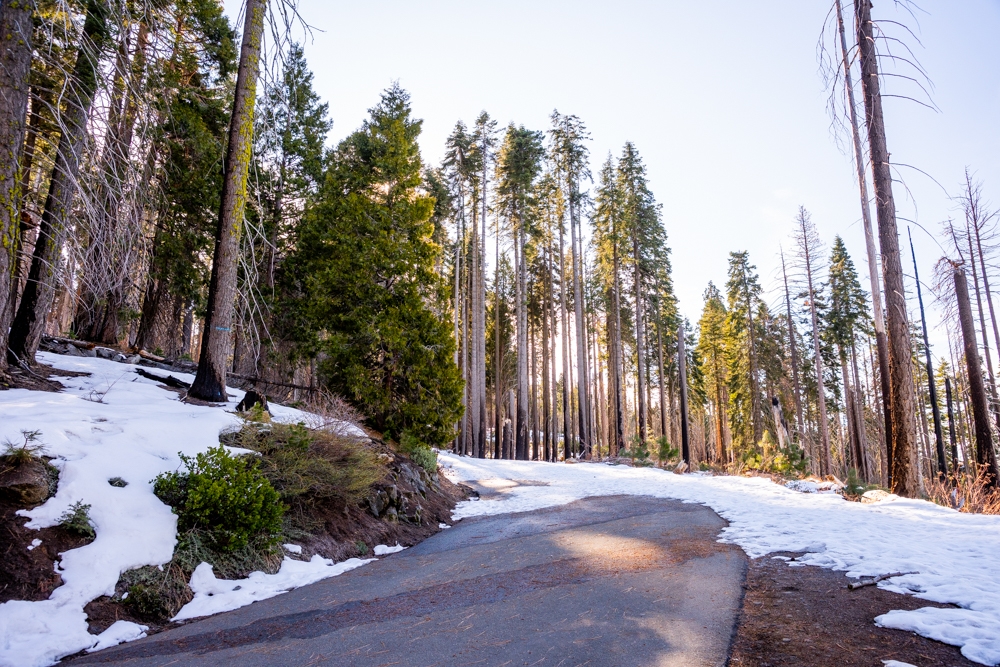
Driving in the park in the winter:
When visiting the park in the winter, you need to carry tire chains with you in the car, at all times. Tire chains can be required on any park road at any time from fall through spring. Road conditions and chain requirements can change rapidly. This includes 4WDs. Click here for more info about winter driving in Sequoia National Park.
Note: there are no gas stations inside the park. Make sure you have a full tank of gas before entering. The closest gas stations are in Three Rivers.
- For 24-hour in-park road conditions, call 1-559-565-3341 (then press 1, then 1 again).
- Check current weather forecasts and park conditions prior to your visit.
- For information about roads outside the park, visit the Caltrans website, or call 800-427-7623.
Fee:
Sequoia National Park charges a fee to enter. Fees are $35 per vehicle or $30 per motorcycle. If you are entering on foot or bike the fee is $20 per person. You can also either purchase a park-specific annual pass for $70 or get an America the Beautiful National Parks Pass for $80. For up to date fee info, click here.
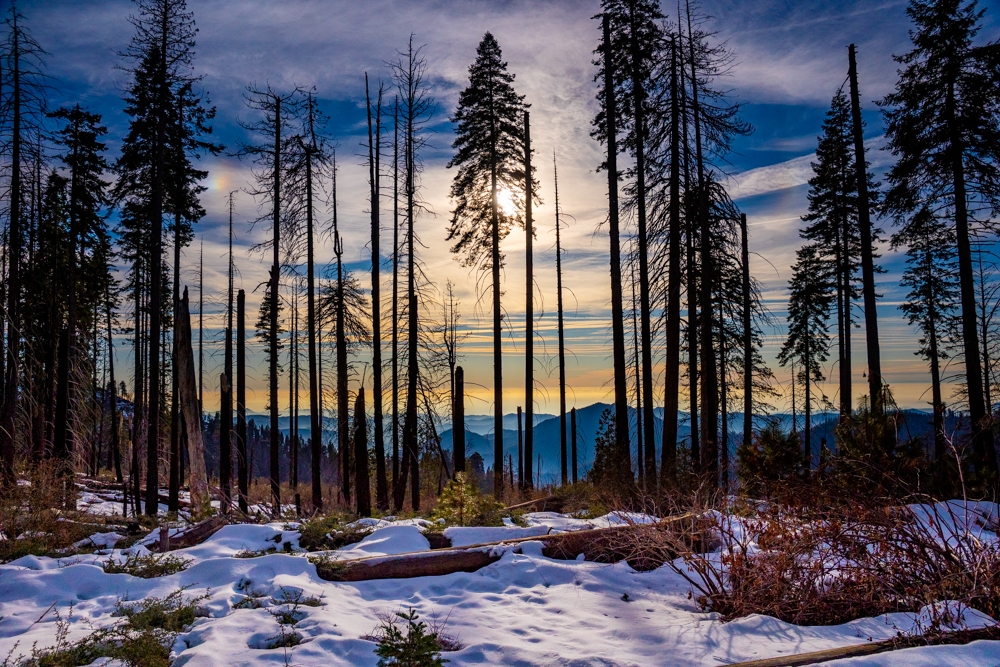
Weather
Sequoia National Park often has snow as early as November and as late as May. In November, the temperature usually around 40-50 degrees during the day. From December to March, the temperature drops to 30 degrees during the day and average about 37 inches of snowfall. It gets REALLY cold at night.
Important Things to Remember
- It can get extremely cold as soon as the sun goes down.
- Always bring chains as the mountain roads can be very icy and dangerous.
- Make sure to have a full tank of gas before driving in.
- Bring proper clothing and winter gear to keep you safe, warm, and cozy.
- Always check road conditions before heading out there. In the winter, the roads can close suddenly due to heavy snowstorms or dangerous conditions.
- Pet are NOT allowed on ALL trails in the Sequoia National Park.
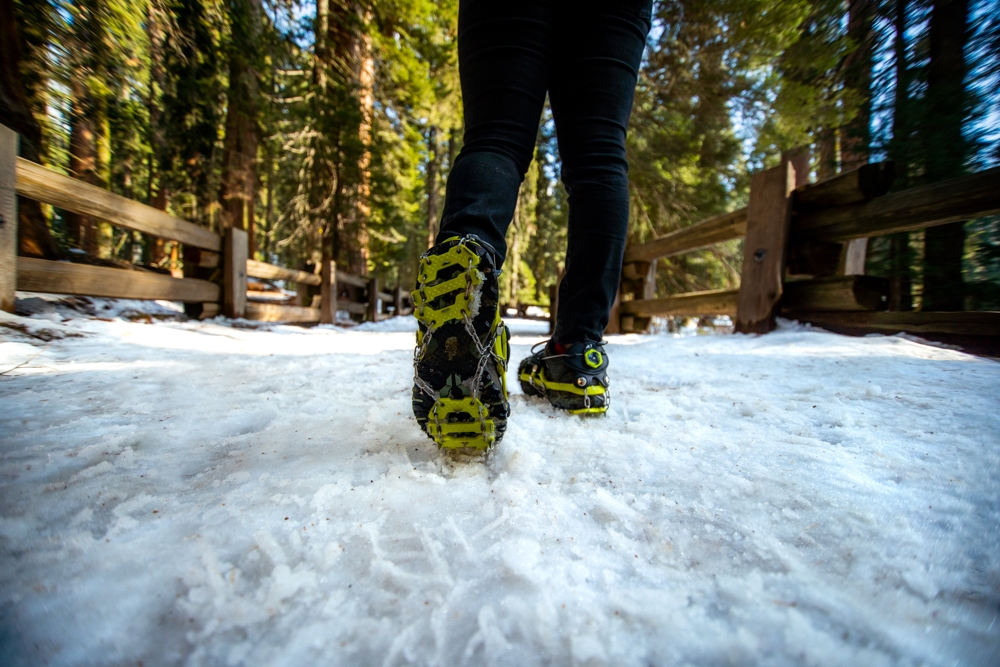
Things to Do
1. Snow playing/Sledding in Sequoia National Park
Sequoia National Park has a few areas designated for snow playing and sledding. It is perfect if you want to bring your family or just want to be a kid again. In Sequoia National Park, you can snow play or sledding at Wolverton. Wolverton is an open area with sledding hills, about 2 miles north of General Sherman Tree. You can rent skis and snowshoes at Wuksachi Lodge
Note: Snow play is NOT allowed in Residential areas, Sherman Tree Road, Grant Tree Trail area, and some other areas as posted.
2. Hiking or Snowshoeing
Hiking or Snowshoeing through Sequoia National Park in the winter is a must. The trails are particularly beautiful. However, make sure you come prepared with proper winter gear before attempting any hike. Check out our recommended gear below.
• General Sherman
This is a short trail (0.5 miles) and quite beautiful. It will take you to the largest tree in the world. This trail can get very busy, although, not as bad in the winter. As it is part of the Congress Trail, we talked about it here.
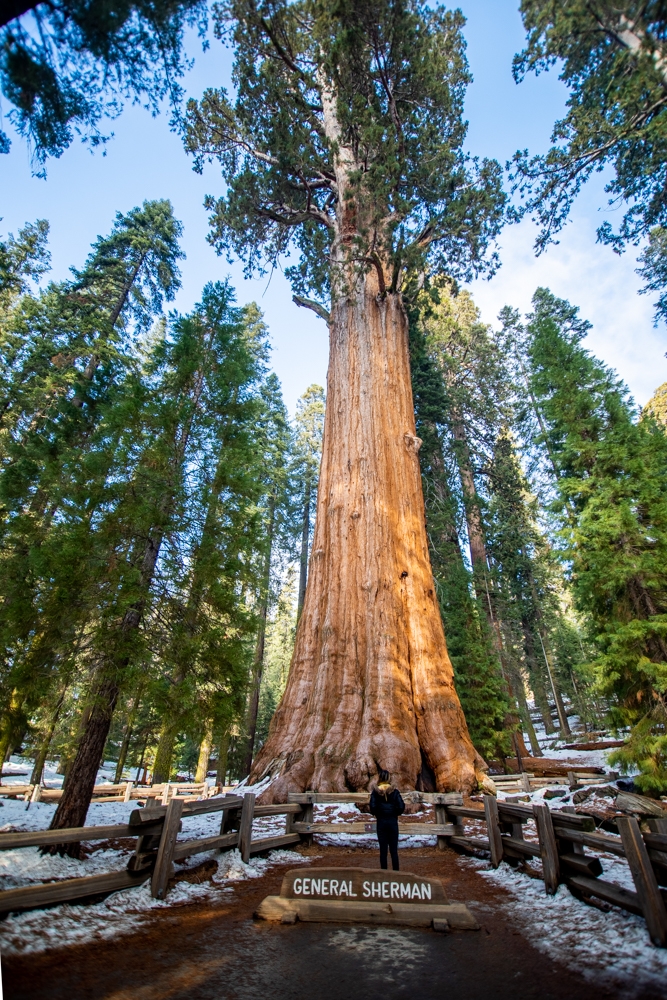
• Congress Trail
Congress Trail is a MUST, doesn’t matter what season. This trail is what Sequoia National Park is about. It is especially MAGICAL in the winter. You’ll get to walk through beautiful clusters of these giant sequoia trees.
• Big Trees Trail
An easy 1.2 miles loop. This trail will take you among some of the most impressive trees in the park.
• Moro Rock Hike
Moro Rock Hike consists of 350 steps to the top of Moro Rock, a giant granite monolith. This trail gives you spectacular 360° views from the foothills and San Joaquin Valley to the west, to the wilderness to the east.
• Snowshoeing to Tunnel Log and Moro Rock
In the winter, the road to Tunnel Log and Moro Rock usually closes. It turns into a snowshoe and skiing haven depends on the snow level. To get to Tunnel Log and Moro Rock, you’ll have to hike in. This hike is beautiful and has multiple cool spots to stop at.
3. Ranger-Guided Snowshoes Walks
Sequoia National Park usually offers ranger-guided snowshoes walks from December through March, as long as there are at least 8 inches of snow on the ground. Check out the park online program calendar for updated info.
As of now, due to COVID-19, all these programs are temporarily suspended. However, you can schedule private tours with Sequoia Parks Conservancy for a cost. Check their calendar for program offerings.

Where to Stay
Most of the facilities inside Sequoia National Park close in the winter or have very limited capacity. There are some lodging options for you.
Camping
Due to its location, Potwisha is usually the only campground that opens. Since it’s located in the southern part of Sequoia National Park, the temperatures here are a bit warmer, which makes it easier to camp outdoor overnight. Make sure to make your camping reservation ahead of time.
Hotel Inside the Park
If you prefer something nicer and warmer, you can stay at the Wuksachi Lodge. It is located inside the park and usually opens year-round. Wuksachi Lodge is also dog-friendly. Check out their website for more info. We loved our stay at the Wukaschi Lodge. In the winter, we prefer to stay inside the park to help with any unnecessary traveling.
Staying Outside the Park
If you don’t mind staying outside the park, Three Rivers is the closest town. It offers many options ranging from Airbnb, Bed & Breakfast to motels. We stayed at the Rio Sierra River House on our summer visit. This place is super cute. We fell asleep to the sound of the running river every night.
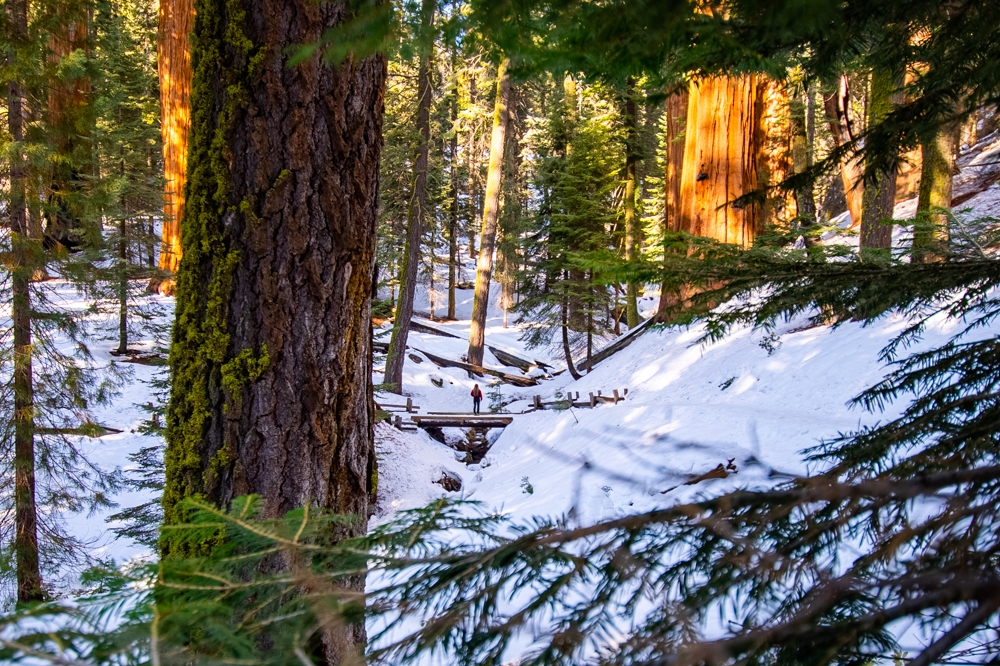
Recommended Gear
• Waterproof Hiking shoes
It’s important to keep your feet dry and warm when hiking in the cold or snow. Make sure to bring your waterproof hiking shoes. Vy’s shoes are Merrell Women’s Moab 2 Mid Waterproof Hiking Boot. Dustin’s shoes are TARGHEE III WATERPROOF.
• Food
There are not a many places to purchase food inside the park, especially during Covid-19. Make sure to bring plenty of food and snacks.
• Gas
Make sure to have a full tank of gas before entering the park.
• Sunscreen
Bring sunscreen! The sun is more intense in the snow. We use eco-friendly, reef-safe sunscreen, All Good Organic Sunscreen Butter – Zinc Oxide – Coral Reef Safe, and All Good Sport Sunscreen Lotion – Coral Reef Safe (3 oz)(2-Pack) or Stream2Sea SPF 30 Reef Safe Sport Tinted Sunscreen.
• Water
Doesn’t matter when you go, always make sure to bring plenty of water. Vy uses the Camelback L.U.X.E. Dustin uses the Clik Small pack (sadly Clik is no longer around). Patagonia Women’s Nine Trails Pack 18L is also a great backpack for a shorter hike like this.

• Tire chains
When visiting the park in the winter, you need to carry tire chains with you in the car, at all times. Tire chains can be required on any park road at any time from fall through spring. Road conditions and chain requirements can change rapidly. This includes 4WDs.
• Warm, preferably waterproof jacket
It gets pretty cold here in the winter and the weather can be unpredictable. Make sure to bring an extra-warm, waterproof jacket. I love my Patagonia Snowbelle jacket. Not only it comes in cute colors, but it also blocks out the wind and keeps me warm. Dustin loves his REI Co-op First Chair jacket.
• Snowshoes and/or microspikes and trekking poles
If you attempting this hike in the winter, you will need snowshoes to get there and/or microspikes, depending on the trail condition. If it has fresh snow, you will need your snowshoes. Microspikes are best when the trail is more packed down or icy. We ended up using both the last time we were there.
• Layered and thermal clothing
This is for hiking in the winter. You will need warm clothes. We recommend layering. Dustin uses Patagonia Men’s Capilene® Thermal Weight Zip-Neck Hoody and Patagonia Men’s Capilene® Thermal Weight Zip-Neck Hoody. Vy uses Patagonia Women’s Capilene® Thermal Weight Crew and Patagonia Women’s Capilene® Thermal Weight Bottoms as base layers.
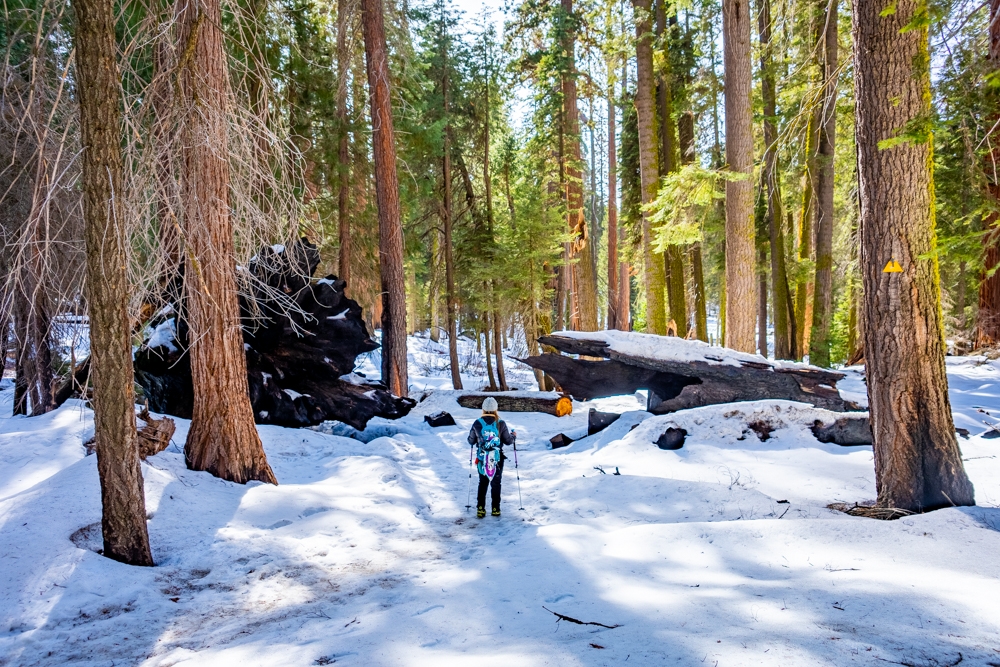
• Gloves/Beanies/Sunglasses
You should bring waterproof gloves, beanies, and sunglasses. Waterproof gloves and beanies will keep you warm.
• Headlights
Bring headlights with you to do this hike in the winter. The weather condition can change rapidly and the days are lot shorter. We use Black Diamond Cosmo.
• Portable Battery
Phones usually die much faster at a higher altitude and in cold conditions. It’s always good to pack a portable battery in case of an emergency. We love our Solar Power Bank. Besides being able to charge our phones, it also works as a flashlight and a compass. If you want something more compact, we recommend the Anker PowerCore Slim.
CAMERA GEAR:
• Camera:
Sony a7 III
Gopro Hero 7 Black
• Lenses:
Sony 24 -70mm f/2.8 Carl Zeiss Vario Sonnar T Zoom Lens
• Accessories:
GoPro The Handler Floating Hand Grip – Official GoPro Mount
Aluminum GoPro protection frame
SandMarc Extended GoPro Pole
Hybrid Pro Filters – DSLR / Mirrorless
Cinema CPL Filter – HERO 9
We hope you have a wonderful and safe time in Sequoia National Park. If you love winter hikes and snowshoeing, Bryce Canyon and Zion National Park are also gorgeous during the winter. Navajo Loop to Queens Garden is one of the most beautiful hikes at Bryce Canyon, while Angel’s Landing at Zion is breathtaking, VERY challenging but worth every moment. Comment below if you have any other questions.
Happy Adventuring. Don’t forget to follow us on Instagram, subscribe to our Youtube channel, and sign up for our newsletter!
